Article category
- Page Path
-
- HOME
- ARTICLE CATEGORY
- Article category
- Clinical note
- Infection
- Coronavirus disease 2019 in a 2-month-old male infant: a case report from Iran
- Hosein Heydari, Seyed Kamal Eshagh Hossaini, Ahmad Hormati, Mahboubeh Afifian, Sajjad Ahmadpour
- Clin Exp Pediatr. 2020;63(12):499-502. Published online September 21, 2020
-

-
DOI: https://doi.org/10.3345/cep.2020.00941 Retraction in: Clin Exp Pediatr 2022;65(8):417
- Original Article
- Nephrology (Genitourinary)
- Sonographic renal length and volume of normal Thai children versus their Chinese and Western counterparts
- Chantima Rongviriyapanich, Thanarat Sakunchit, Chirawat Sudla, Supamas Mungkung, Napapong Pongnapang, Chai Hong Yeong
- Clin Exp Pediatr. 2020;63(12):491-498. Published online July 13, 2020
-

Question: What is the normal renal size of Thai children and is the renal nomogram comparable to those of Western and Chinese cohorts?
Finding: The renal length of Thai children was moderately correlated with that of Western children, while the age-specific renal volume was significantly smaller than that of Chinese children.
Meaning: Renal size in children can vary among regions and sociodemographic backgrounds; hence, a local reference standard is needed.
- Gastroenterology
- Evaluating the effects of probiotics in pediatrics with recurrent abdominal pain
- Parisa Rahmani, Azin Ghouran-orimi, Farzaneh Motamed, Alireza Moradzadeh
- Clin Exp Pediatr. 2020;63(12):485-490. Published online July 21, 2020
-

Question: ecurrent abdominal pain (RAP) is a chief complaint among pediatrics and is associated with reduced quality of life, for both parent and child, and economic burden. Does probiotics reduce the frequency of RAP among children?
Finding: This study reported the effects of Lactobacillus reuteri probiotics among children with RAP as a result of multiple etiologies.
Meaning: The administration of probiotic supplements is significantly associated with pain relief among RAP children presented with functional abdominal pain, irritable bowel syndrome, and functional dyspepsia.
- Editorial
- Allergy
- Insights into pediatric pollen food allergy syndrome
- Jeong Hee Kim
- Clin Exp Pediatr. 2020;63(12):483-484. Published online June 1, 2020
-
- Review Article
- Infection
- The COVID-19 pandemic: an unprecedented tragedy in the battle against childhood obesity
- Maximilian Andreas Storz
- Clin Exp Pediatr. 2020;63(12):477-482. Published online November 5, 2020
-

Large-scale quarantine and home confinement during the coronavirus disease 2019 (COVID-19) pandemic will impose new and unfamiliar stressors on children, thereby worsening the childhood obesity epidemic. Physical, nutritional, and psychosocial factors that promote obesity in children during this special situation complementarily contribute to an unprecedented obesogenic environment. Involved stakeholders, including governments, schools, and families, must make all efforts to minimize the impact of the COVID-19 epidemic on childhood obesity.
- Pulmonology
- Current perspectives on atypical pneumonia in children
- Jung Yeon Shim
- Clin Exp Pediatr. 2020;63(12):469-476. Published online June 10, 2020
-
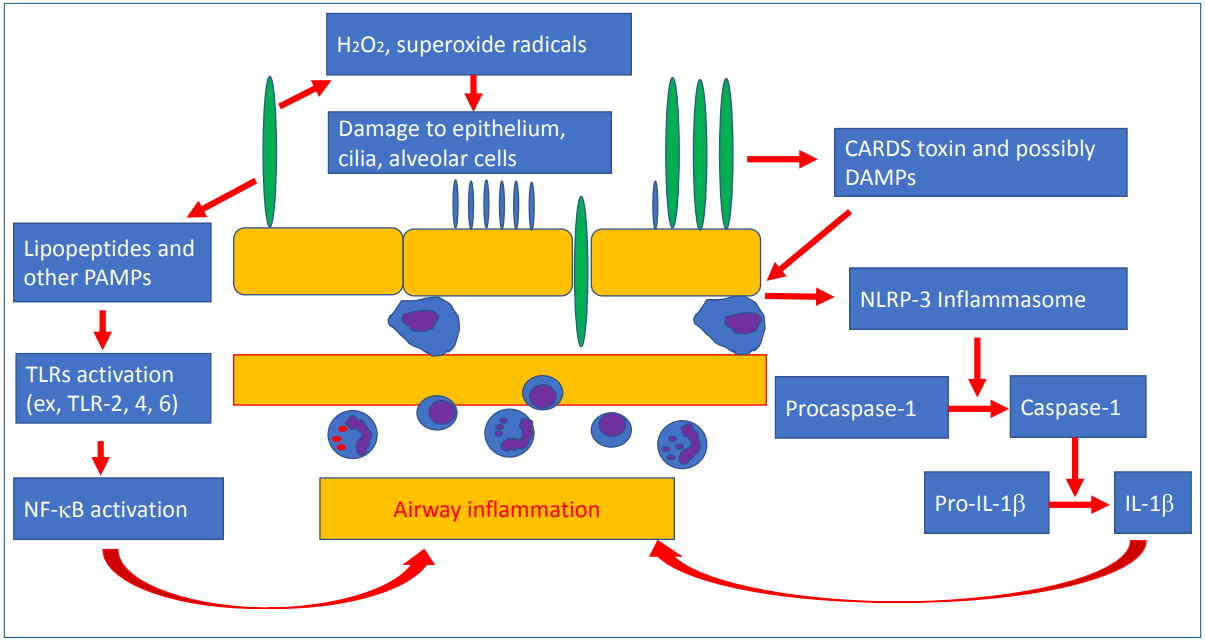
Macrolides are the first line treatment in atypical pneumonia caused by M. pneumoniae, C. pneumoniae, and L. pneumophila. Macrolide-resistant mycoplasma pneumonia (MRMP) is emerging worldwide, especially in East Asia. Immune modulators such as corticosteroids or second line antibiotics are treatment options for MRMP. Pediatricians should be careful with empirical therapy of macrolides in children with mild to moderate community-acquired pneumonia not to increase the risk of MRMP.
- Allergy
- Pollen-food allergy syndrome in children
- You Hoon Jeon
- Clin Exp Pediatr. 2020;63(12):463-468. Published online May 14, 2020
-

The prevalence of pollen-food allergy syndrome (PFAS) in Korean children with pollen allergy was recently reported to be 42.7%. PFAS can cause a wide range of symptoms from mild allergy to severe anaphylaxis depending on the nature of food allergens that share the epitopes with pollen. Cases of anaphylaxis caused by PFAS have recently increased. Treatments for PFAS should be individualized for patients according to the severity of symptoms.
- Guideline
- Endocrinology
- 2017 Clinical practice guidelines for dyslipidemia of Korean children and adolescents
- Jung Sub Lim, Eun Young Kim, Jae Hyun Kim, Jae-Ho Yoo, Kyung Hee Yi, Hyun Wook Chae, Jin-Ho Choi, Ji Young Kim, Il Tae Hwang; the Committee of Dyslipidemia of Korean Children and Adolescents on behalf of Korean Society of Pediatric Endocrinology (KSPE)
- Clin Exp Pediatr. 2020;63(12):454-462. Published online November 25, 2020
-
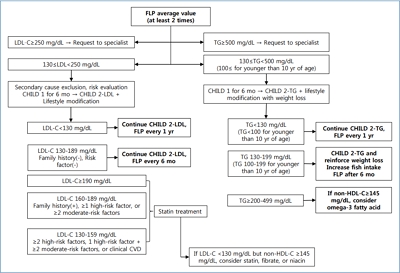
Question: How are children and adolescents with dyslipidemia treated and managed in Korea?
Finding: 2017 guidelines recommend to measure nonfasting non-HDL-C as a screening test and introduce new diet methods: Cardiovascular Health Integrated Lifestyle Diet (CHILD)-1, CHILD-2-low-density lipoprotein cholesterol, and CHILD-2-triglyceride. Statin is the only drug approved in children older than 10 years.
Meaning: New clinical practice guidelines for treating and managing dyslipidemia of Korean children and adolescents are provided.
- Clinical Note
- Allergy
- Recurrent urticaria caused by specific cat serum albumin IgE cross-reacting with pork serum albumin
- Cheon Kim, Sung Won Kim, Yoon Ha Hwang
- Clin Exp Pediatr. 2020;63(11):451-453. Published online April 6, 2020
-
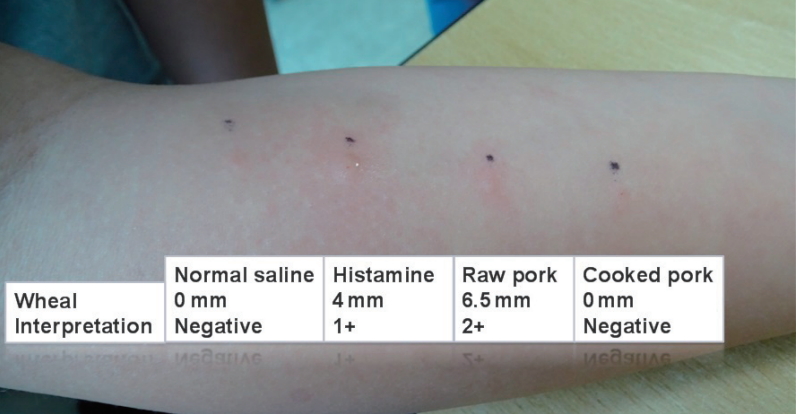
Question: What should be considered in children who complain of pork allergies?
Finding: History of raising a cat, the onset of symptoms after the ingestion of pork and specific IgE tests to pork, cat, milk, and Alpha-gal are needed.
Meaning: Pork cat syndrome could be the cause of pork allergies.
- Original Article
- Gastroenterology
- Acquired noncaustic esophageal strictures in children
- Elif Sag, Aysenur Bahadir, Mustafa Imamoglu, Sefa Sag, Gokce Pinar Reis, Erol Erduran, Murat Cakir
- Clin Exp Pediatr. 2020;63(11):447-450. Published online October 15, 2020
-
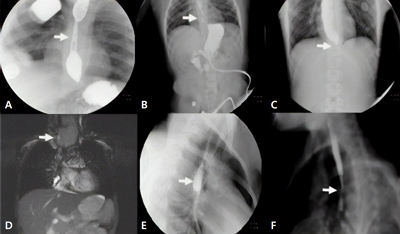
Question: Which clinical findings suggest esophageal structure in children with dysphagia?
Finding: The presence of solid dysphagia, malnutrition, and a comorbid condition is suggestive of esophageal stricture in children with dysphagia.
Meaning: Patients with findings suggestive of noncaustic esophageal stricture should receive early referral to pediatric gastroenterology units.
- Developmental and Behavioral Medicine
- Development of the Korean Developmental Screening Test for Infants and Children (K-DST)
- Hee Jung Chung, Donghwa Yang, Gun-Ha Kim, Sung Koo Kim, Seoung Woo Kim, Young Key Kim, Young Ah Kim, Joon Sik Kim, Jin Kyung Kim, Cheongtag Kim, In-Kyung Sung, Son Moon Shin, Kyung Ja Oh, Hee-Jeong Yoo, Hee Joon Yu, Seoung-Joon Lim, Jeehun Lee, Hae-Ik Jeong, Jieun Choi, Jeong-Yi Kwon, Baik-Lin Eun
- Clin Exp Pediatr. 2020;63(11):438-446. Published online May 14, 2020
-

Question: Can the Korean Developmental Screening Test for Infants and Children (K-DST) be a useful screening tool for infants and children in Korea?
Finding: The K-DST has high reliability (internal consistency of 0.73–0.93, test-retest reliability of 0.77–0.88) and a high discriminatory ability with a sensitivity of 0.833 and specificity of 0.979.
Meaning: The K-DST is an effective and reliable screening tool for infants and children with neurodevelopmental disorders in Korea.
- Neonatology (Perinatology)
- Knowledge and perceptions of kangaroo mother care among health providers: a qualitative study
- Hadi Pratomo, Tiara Amelia, Fatmawati Nurlin, Asri C. Adisasmita
- Clin Exp Pediatr. 2020;63(11):433-437. Published online July 21, 2020
-

Question: What are health providers’ knowledge and perceptions of Kangaroo mother care (KMC)?
Finding: Health providers’ knowledge of KMC was sufficient; however, some of their perceptions about it could create barriers to the successful implementation of hospital KMC programs.
Meaning: Health providers’ perceptions about KMC should be considered to ensure successful KMC implementation. Locally designed on-site training programs could overcome the challenges.
- Editorial
- Neonatology (Perinatology)
- Barriers to and enablers of kangaroo mother care
- Soon Min Lee
- Clin Exp Pediatr. 2020;63(11):431-432. Published online October 10, 2019
-
- Nephrology (Genitourinary)
- Undescended testis: importance of a timely referral to a surgical specialist
- Su Jin Kim
- Clin Exp Pediatr. 2020;63(11):429-430. Published online March 23, 2020
-
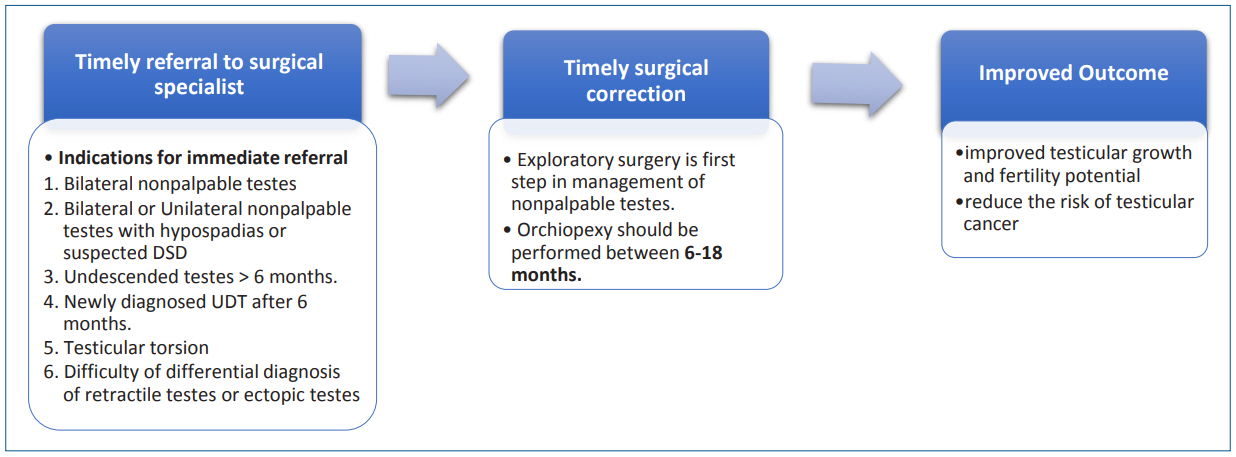
Undescended testes (UDT) is the most common congenital genitourinary abnormality in male infants and associated with decreased fertility and a higher future malignancy risk, especially in cases of delayed orchiopexy after puberty. It is important to timely referral to a surgical specialist and timely surgical correction of UDT to improve fertility and decrease the risk of malignancy.
- Review Article
- Neurology
- Health effects of electromagnetic fields on children
- Jin-Hwa Moon
- Clin Exp Pediatr. 2020;63(11):422-428. Published online May 26, 2020
-
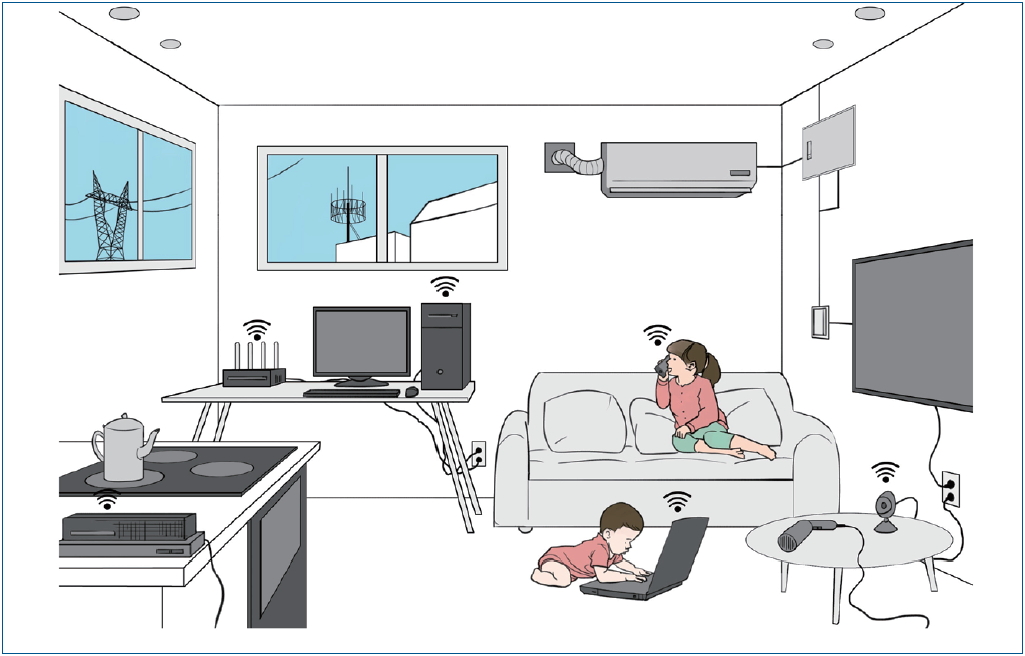
· The nervous systems of children are more vulnerable to the effects of electromagnetic waves than adults.
· The exposure to electromagnetic fields (EMFs) among children should be minimized.
· According to International Agency for Research on Cancer EMFs are possibly carcinogenic, it should not be overlooked or interpreted with bias.
- Other
- Comparison of diagnostic and treatment guidelines for undescended testis
- Jaeho Shin, Ga Won Jeon
- Clin Exp Pediatr. 2020;63(11):415-421. Published online March 23, 2020
-
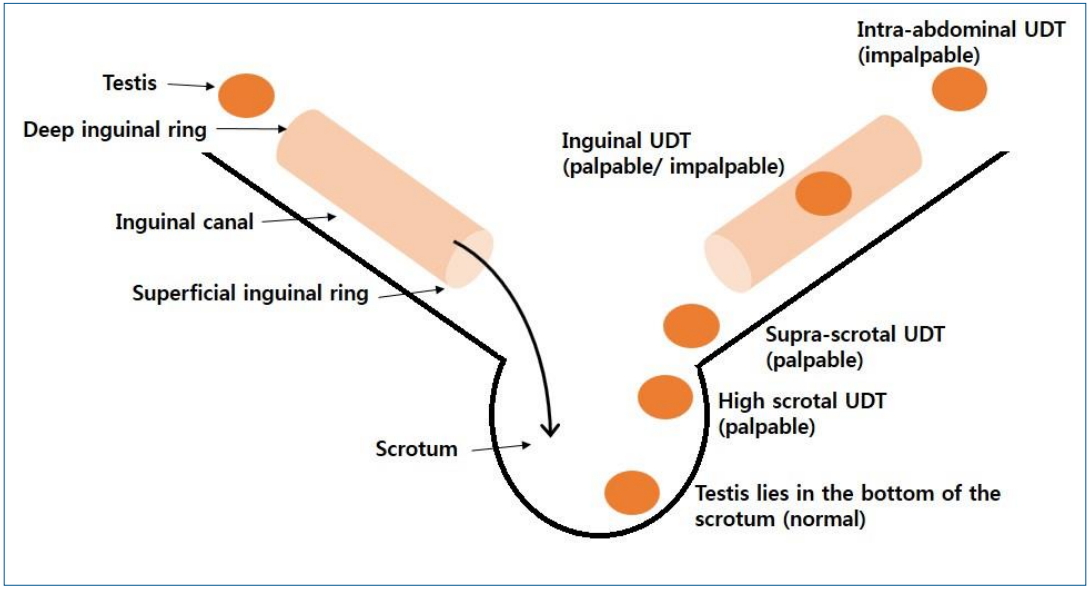
Primary caregivers should consider surgical specialist referral of patients with undescended testis if no descent occurs by 6 months, undescended testis is newly diagnosed after 6 months of age, or testicular torsion is suspected. Orchiopexy is recommended between 6 and 18 months at the latest. The original location of the testes and the age at orchiopexy are predictive factors for infertility and malignancy later in life.
- Clinical Note
- Nephrology (Genitourinary)
- First episode of nephrotic syndrome with acute abdominal pain
- Samridhi Goyal, Rachita Singh Dhull, Bobbity Deepthi, Abhijeet Saha
- Clin Exp Pediatr. 2020;63(10):411-414. Published online July 21, 2020
-
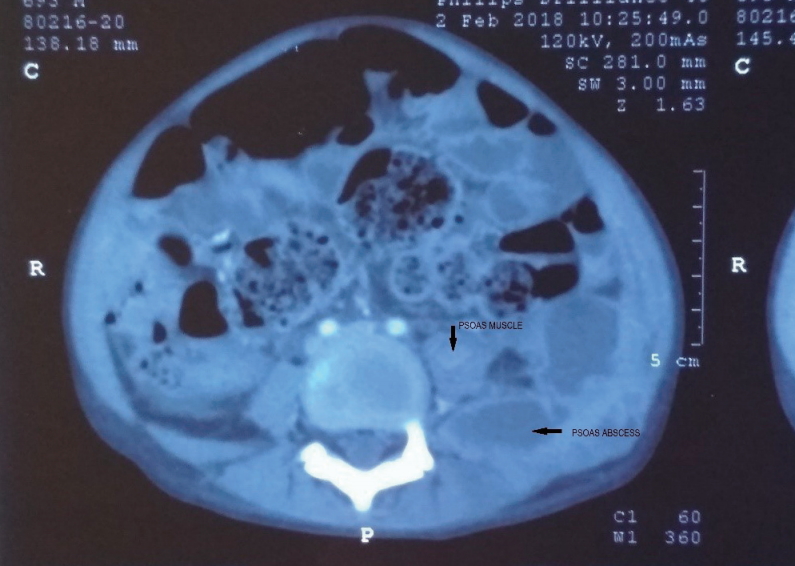
Question: What are the likely causes of pain abdomen in Nephrotic syndrome?
Finding: Severe hypovolemia leading to mesenteric ischemia, spontaneous bacterial peritonitis, gastroenteritis, adverse effect of corticosteroids leading to gastritis, mesenteric ischemia due to thromboembolism, acute appendicitis, intussusception due to severe gut wall oedema and rarely Psoas abscess.
Meaning: Clinical suspicion and careful investigation is warranted to diagnose rare cause of pain abdomen like Psoas abscess.
- Original Article
- Neonatology (Perinatology)
- Risk-based maternal group B Streptococcus screening strategy is compatible with the implementation of neonatal early-onset sepsis calculator
- Niek B. Achten, J. Wendelien Dorigo-Zetsma, Annemarie M.C. van Rossum, Rianne Oostenbrink, Frans B. Plötz
- Clin Exp Pediatr. 2020;63(10):406-410. Published online April 16, 2020
-
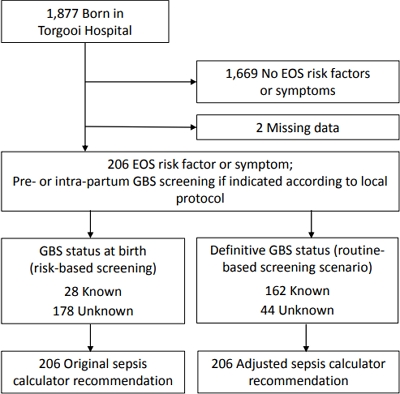
Question: To what extent does risk-based Group B Streptococcus (GBS) screening influence management recommendations by the early-onset sepsis (EOS) calculator?
Finding: In 97% of the newborn infants, the EOS calculator recommendation remained unchanged after the GBS status at birth was updated to the definitive GBS status.
Meaning: Risk-based GBS screening results are compatible with EOS calculator recommendations.
- Endocrinology
- Zinc transporter 8 autoantibody in the diagnosis of type 1 diabetes in children
- Nur Rochmah, Muhammad Faizi, Siti Wahyu Windarti
- Clin Exp Pediatr. 2020;63(10):402-405. Published online October 6, 2020
-
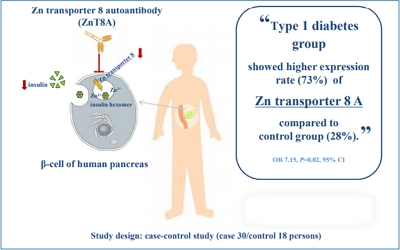
Question: Can zinc transporter 8 autoantibody (ZnT8A) be used for diagnosing type 1 diabetes (T1D)?
Finding: Twenty-two of 30 subjects with type 1 diabetes (73.3 %) were positive for ZnT8A compared to 5 of 18 controls (27.8%).
Meaning: ZnT8A has potential for clinical applications in the diagnosis of T1D.
- Neonatology (Perinatology)
- New modified version of the Risk Adjustment for Congenital Heart Surgery category and mortality in premature infants with critical congenital heart disease
- Young Mi Yoon, Seong Phil Bae, Yoon-Joo Kim, Jae Gun Kwak, Woong-Han Kim, Mi Kyoung Song, Seung Han Shin, Ee-Kyung Kim, Han-Suk Kim
- Clin Exp Pediatr. 2020;63(10):395-401. Published online July 15, 2020
-
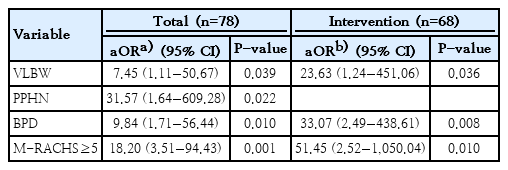
Questions: This study aimed to describe the survival of premature infants with critical congenital heart disease (CHD) and to identify the risk factors including the new modified version of the Risk Adjustment for Congenital Heart Surgery (M-RACHS) associated with mortality.
Finding: For premature infants with critical CHD, survival rate was 76.9% and very low birth weight (VLBW), persistent pulmonary hypertension of the newborn (PPHN), bronchopulmonary dysplasia (BPD), and M-RACHS 5 or more were associated with in-hospital mortality.
Meaning: VLBW, PPHN and BPD, as well as M-RACHS≥5, were risk factors for mortality among premature infants with critical CHD.
- Editorial
- Neonatology (Perinatology)
- Utility of neonatal early-onset sepsis calculator in risk-based group B Streptococcus screening approach
- Myo-Jing Kim
- Clin Exp Pediatr. 2020;63(10):393-394. Published online May 22, 2020
-
· Evaluation of the risk factors for early-onset sepsis (EOS) is important to optimal prevention and treatment.
· The EOS calculator is still valid as part of the risk-based group B Streptococcus (GBS) screening approach.
· The risk factor assessment using the EOS calculator is worth use before the introduction of universal GBS screening.
- Risk factors for in-hospital mortality in premature infants with critical congenital heart disease
- Jeonghee Shin
- Clin Exp Pediatr. 2020;63(10):391-392. Published online October 6, 2020
-
The incidence and mortality rates of critical congenital heart disease (CHD) are higher in preterm than in term infants. The risk factors for in-hospital mortality in premature infants with critical CHD are unclear. However, the mortality of preterm infants with critical CHD may be related to CHD complexity as well as gestational age, birth weight, the presence of prematurity-associated comorbidities, and the treatment itself.
- Allergy
- Should we prescribe montelukast to allergic pediatric patients?
- Yong Mean Park
- Clin Exp Pediatr. 2020;63(10):389-390. Published online August 24, 2020
-
- Review Article
- Endocrinology
- Air pollution and childhood obesity
- Moon Young Seo, Shin-Hye Kim, Mi Jung Park
- Clin Exp Pediatr. 2020;63(10):382-388. Published online March 27, 2020
-

Questions: What are the possible effects of air pollution on the occurrence of childhood obesity and what are the mechanisms?
Finding: Epidemiologic studies suggest that air pollutants might act as obesogens in the pediatric population, and their possible mechanisms include oxidative stress, physical inactivity, and epigenetic modulation.
Meaning: This paper reviews updated information on air pollution, one of the modifiable environmental factors in childhood obesity.
- Allergy
- Montelukast use over the past 20 years: monitoring of its effects and safety issues
- Yong Ju Lee, Chang-Keun Kim
- Clin Exp Pediatr. 2020;63(10):376-381. Published online February 5, 2020
-

Although the efficacy of montelukast is inferior to that of ICS, both physicians and parents prefer montelukast to ICSs.
EDN may be a useful biomarker for the treatment and monitoring of preschool children with asthma.
The US FDA requires boxed warning about serious neuropsychiatric events of montelukast, therefore, physicians should consider the benefits and risks of montelukast before prescribing it.
- Clinical Note
- Neonatology (Perinatology)
- Management of the first newborn delivered by a mother with COVID-19 in South Korea
- Eun-Kyung Lee, Won Duck Kim, Dong won Lee, Sang-Ah Lee
- Clin Exp Pediatr. 2020;63(9):373-375. Published online July 13, 2020
-
Question: How to manage the newborn born to the coronavirus disease 2019 (COVID-19) pregnant?
Finding: Medical staff managed the delivery and neonatal care of a COVID-19 pregnant patient was based on the “Guidelines for COVID-19 response.”
Meaning: We desire that our management will help treat for subsequent patients and there should be updated continuously the prevention and control consensus strategies for newborn COVID-19.
- Original Article
- Neurobehavior
- Association between assisted reproductive technology and autism spectrum disorders in Iran: a case-control study
- Ensiyeh Jenabi, Mahdieh Seyedi, Ronak Hamzehei, Saeid Bashirian, Mohammad Rezaei, Katayoon Razjouyan, Salman Khazaei
- Clin Exp Pediatr. 2020;63(9):368-372. Published online March 27, 2020
-

Background: Autism spectrum disorder (ASD) is a neurodevelopmental disorder defined by impairments in social interaction and verbal and nonverbal communication.
Purpose: Determine the association between use of assisted reproduction technology (ART) and the risk of ASD among children. Methods: This case-control study included 300 participants (100 cases, 200 controls). The control group included women with a child aged 2–10 years without ASD,...
- Other
- Evaluation of goodness of fit of semiparametric and parametric models in analysis of factors associated with length of stay in neonatal intensive care unit
- Fatemeh Kheiry, Sadegh Kargarian-Marvasti, Sima Afrashteh, Abolfazl Mohammadbeigi, Nima Daneshi, Salma Naderi, Seyed Hossein Saadat
- Clin Exp Pediatr. 2020;63(9):361-367. Published online June 10, 2020
-

Question: Hospitalization in neonatal intensive care unit (NICU) is associated with life-threatening hazards. What factors associated with neonatal length of stay (LOS) in the NICU?
Finding: Breastfeeding, phototherapy, acute renal failure (ARF), mechanical ventilation, and central venous catheter (CVC) access were identified as factors associated with NICU length of stay.
Meaning: Protective effects of breastfeeding and CVC access, whereas increase effects of phototherapy, ARF, and mechanical ventilation in LOS can be supporting evidence to establish effective interventions to reduce length of NICU stay.
- Editorial
- Infection
- What are considerations for neonates at risk for COVID-19?
- Soo-Han Choi
- Clin Exp Pediatr. 2020;63(9):359-360. Published online July 17, 2020
-

- Neonatology (Perinatology)
- Survival model application for analysis of neonatal length of stay
- Eun Joo Lee
- Clin Exp Pediatr. 2020;63(9):357-358. Published online May 14, 2020
-

-

-
-
Impact Factor3.2
-
8.02023CiteScore94th percentilePowered by
-









